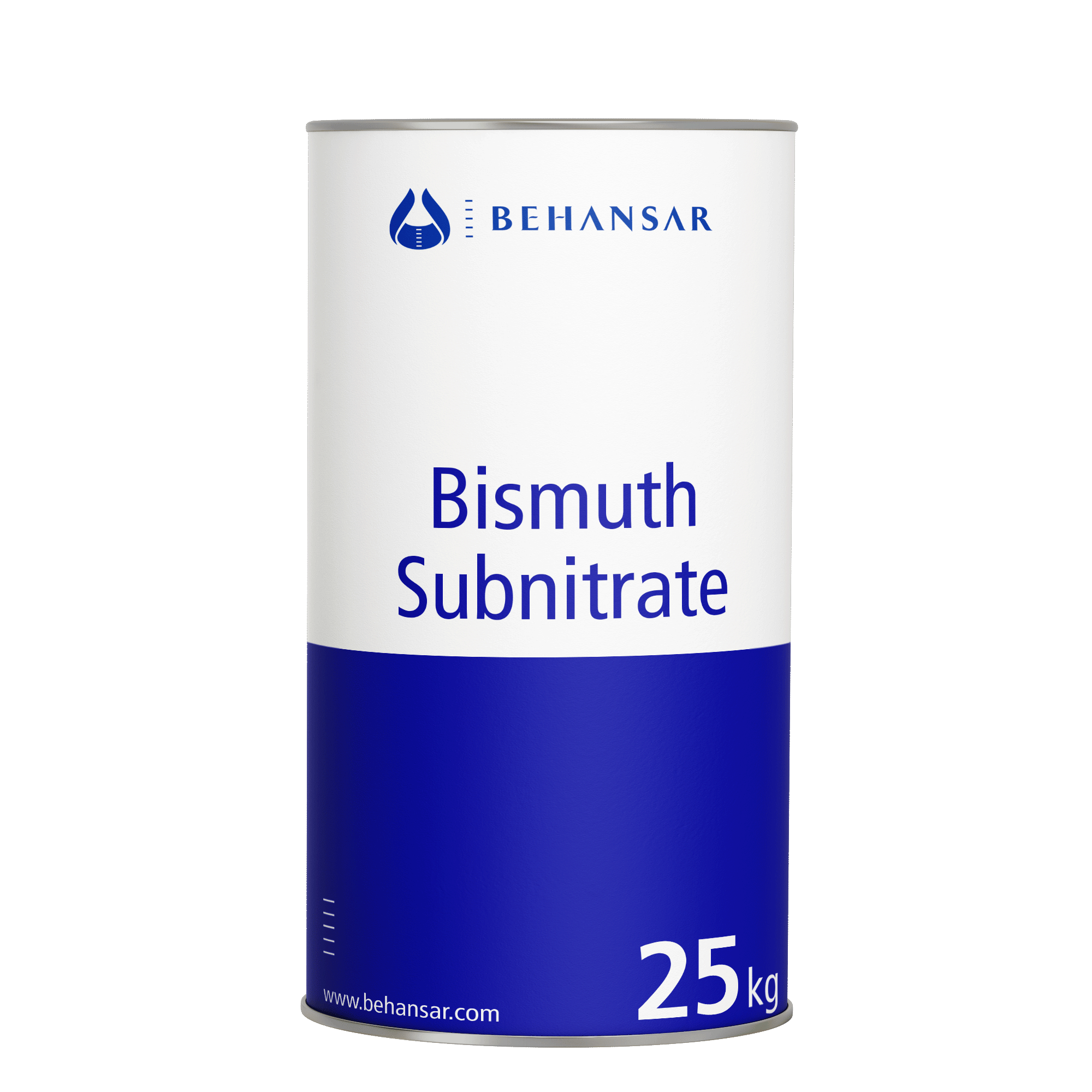Bismuth Subnitrate
| Chemical Formula: | Bi₅O(OH)₉ (NO₃ )₄ |
| Molecular weight | 1461.99 |
| .CAS No: | 1304-85- 4 |
| Applications: |

About Bismuth Subnitrate
Bismuth subnitrate, also known as bismuth (III) oxynitrate, is one of bismuth compounds that has played invaluable therapeutic roles for over two centuries in the treatment of a range of clinical conditions including dyspepsia, diarrhea, syphilis, oral and upper respiratory tract infections, verrucae and warts. Recently, bismuth subnitrate have attracted novel attentions because of its cure potential and specific advantages over other bismuth complexes.
It is mainly employed as an effective therapeutic regimen against Helicobacter pylori, spiral bacteria penetrate the mucoid lining of the stomach and thereby establish infection. Bismuth subnitrate exerts its direct antibacterial activity by aggregation in the bacterial cell wall and periplasmic space therefore disturbs urease secretion and ATP synthesis; Consequently, it could prevent H. pylori from colonization in stomach. In some European countries like Norway, bismuth subnitrate is the preferred bismuth compound used for H. pylori eradication.
According to bactericidal properties of bismuth subnitrate, it has also used as antidiarrheic agents in many gastrointestinal infections.
Furthermore, bismuth subnitrate creates a protective layer throughout the stomach by attachment to the mucosal glycoproteins so that new barrier prevents acid from reaching to stomach wall and ulcer healing is facilitated. Hence, this medicine is prescribed for patients with peptic ulcer, gastro-esophageal reflux disease (GERD) and erosive duodenitis. Because bismuth accumulates in their stomach and duodenum specially at the site of ulcer and relieve the pain caused by gastrointestinal wall erosion.
Since bismuth subnitrate is insoluble in water and could not absorb through biological membranes, it can only act locally within gastrointestinal tract after oral or rectal administrations. This is an advantage for this compound because soluble bismuth compounds that absorb systemically would accumulate in vital organs such as brain, heart, spleen, liver and kidney and produce toxic effects over time. Nonabsorbable bismuth compounds like bismuth subnitrate should be preferentially considered in bismuth-based therapies because they would minimize toxicity while maintaining efficacy.
Bismuth subnitrate is a simple, readily available and effective catalyst for the Markovnikov-type hydration of terminal acetylenes.
| Product Number | Product Name | Form | Pharmacopoeia | Solvency | Storage conditions | Color | Purity | Additional information |
|---|---|---|---|---|---|---|---|---|
| 151300019 | Bismuth Subnitrate | Powder | USP | Practically insoluble in water and in alcohol; readily dissolved by hydrochloric acid or by nitric acid. | Preserve in well-closed containers. | White crystalline powder . | NLT 79.0% of bismuth |

